Are you seeing different engagement rates on iOS and Android? Can’t figure out if it’s normal to have a higher push notification CTR (click through rate) on Android than on iOS? Don’t worry, you’re not alone in this. Read on to find the answers to all of your questions.
After an extensive study of notifications sent in 2016 to users across the globe, covering all industries and verticals, we found that engagement rates differ significantly between Android and iOS.
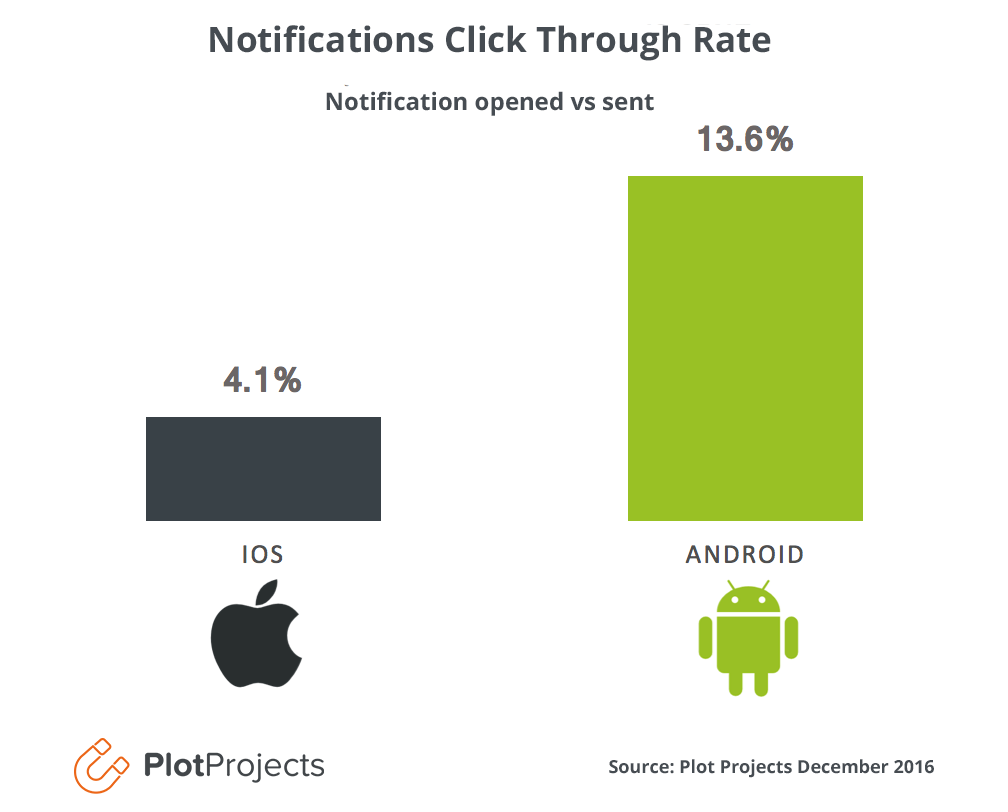
Why does this happen?
QUICK ANSWER: It’s all down to the differences between the notification center (iOS) and the notification drawer (Android) and the associated workflows on the two platforms.
Notifications are much more prominent on Android. They repeatedly appear on the lock screen and sticky icons are placed on the home screen. iOS only reminds you of notifications once and then hides them in the notification center.
For simplicity we will refer to the pull down notification menu as “Notification Center” for both iOS and Android throughout.
5 key aspects that determine the differences in CTRs of Android vs iOS:
1. Sticky Notification Alerts on Android at top left corner
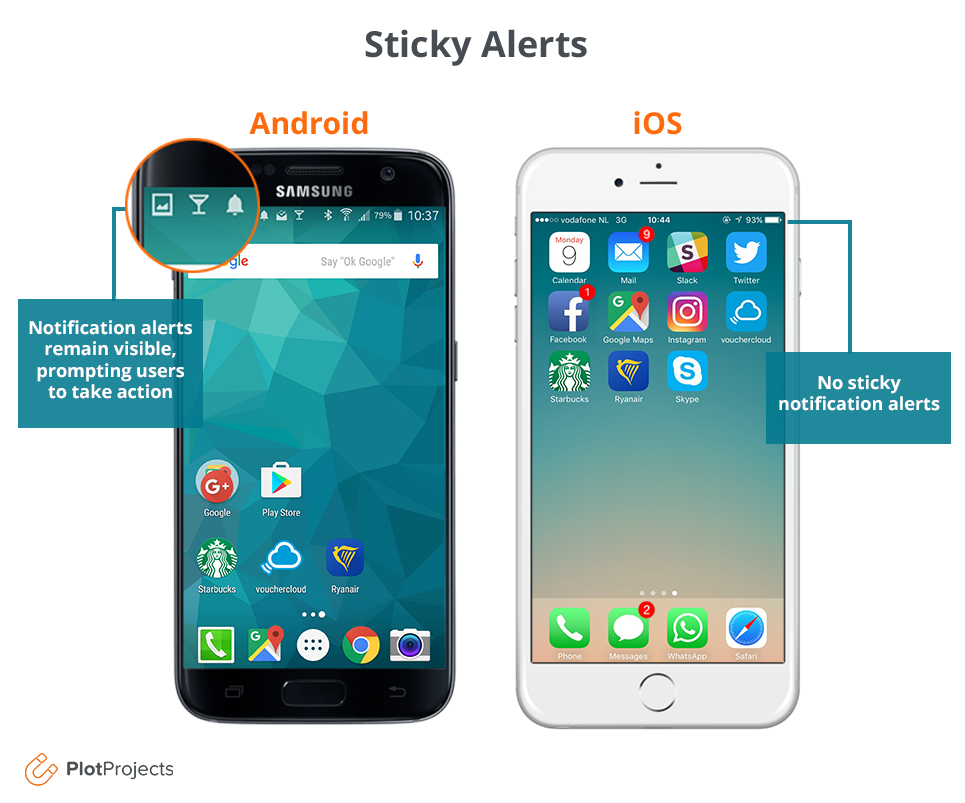
Notification icons always remain at the top left of an Android screen prompting users to take action to clear them. They work similarly to the red numbers (badges) that appear next to app icons.
On iOS there are no such sticky reminders. Notifications can only be accessed by pulling down the notification center.
2. Notifications more prominent on lock screen on Android
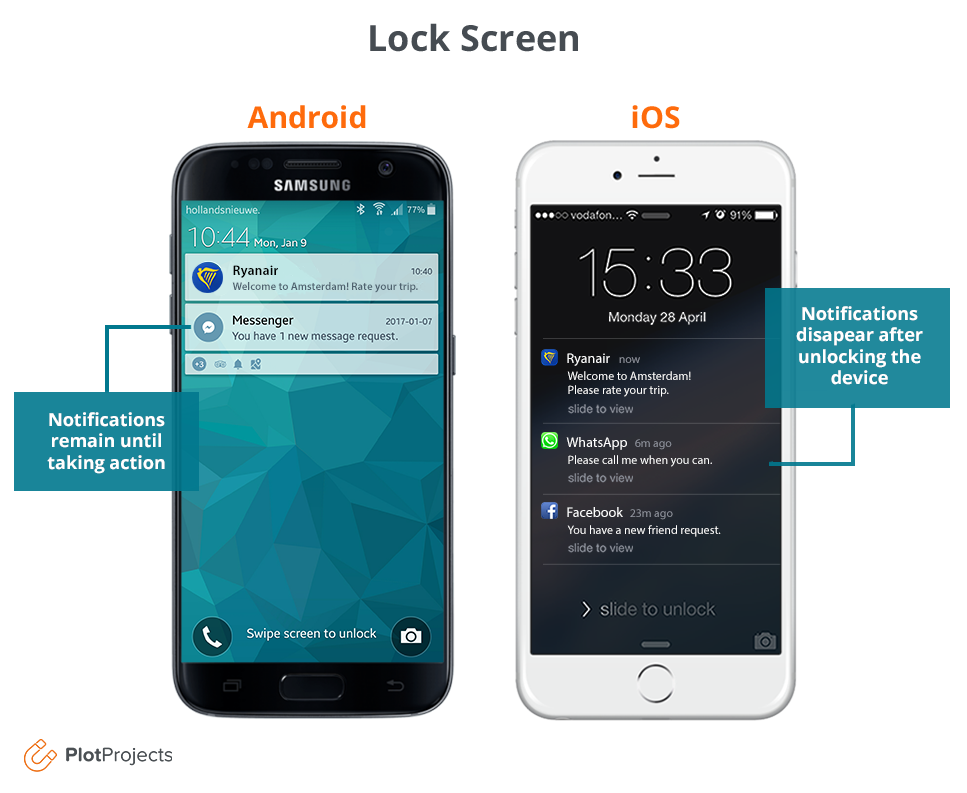
By default, notifications are always shown on the lock screen on Android. You need to clear them from the notification center manually to get rid of them. On iOS, notifications are cleared from the lock screen as soon as the phone is unlocked. They remain visible only in the notification center.
This hypothesis is further supported by introducing the fingerprint sensor as a variable. This feature was released on the iPhone 5S and Samsung got it working well with the Galaxy S6 and above. The more convenient and quick way of unlocking your device means less time looking at the lock screen and your notifications.
We see a 1.3% higher engagement among users who don’t have a fingerprint sensor.
3. “Pull-up” Control Center on iOS
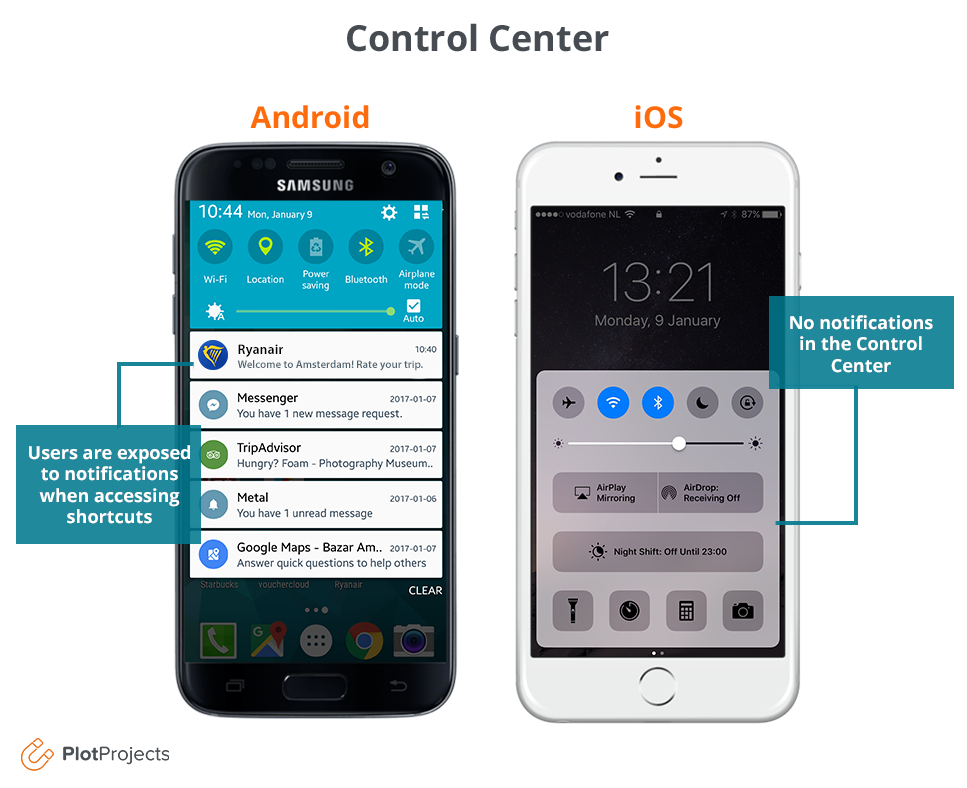
iOS users have an additional “pull-up” Control Center with access to wifi, music and other commonly used shortcuts, but no notifications.
Android users must engage with their notification center to access these features. Once again they will be re-exposed to their notifications.
4. Notification Center history and a peek ahead
The pull-down notification center that we know today was initially released on Android. In 2011, with iOS 5, Apple introduced a very similar looking feature (so much so, that Samsung sued Apple over it).
Both notification centers have been evolving since by adding functionality like custom icons, images and action buttons. Rich notification support on iOS10 is a clear move by apple to increase user engagement with the notification center.
While Android is a clear winner when it comes to clicking on notifications, it may not be the whole story.
UrbanAirship and Appboy have developed their own metrics that account for the likelihood of a user opening an app after receiving a notification message, whether she clicks on it or not. This is called an influenced open. Appboy reported that when this is taken into account, the engagement rate becomes comparable on iOS and Android.
5. Geo Push vs Standard Push?
Plot Projects’ customers consistently see a higher engagement rate across both platforms compared to non-geo push notifications. Location based targeting (enabled by geofencing and beacons) adds an extra level of relevancy to notifications making them more useful and interesting to app users. As a result, they see higher CTRs.
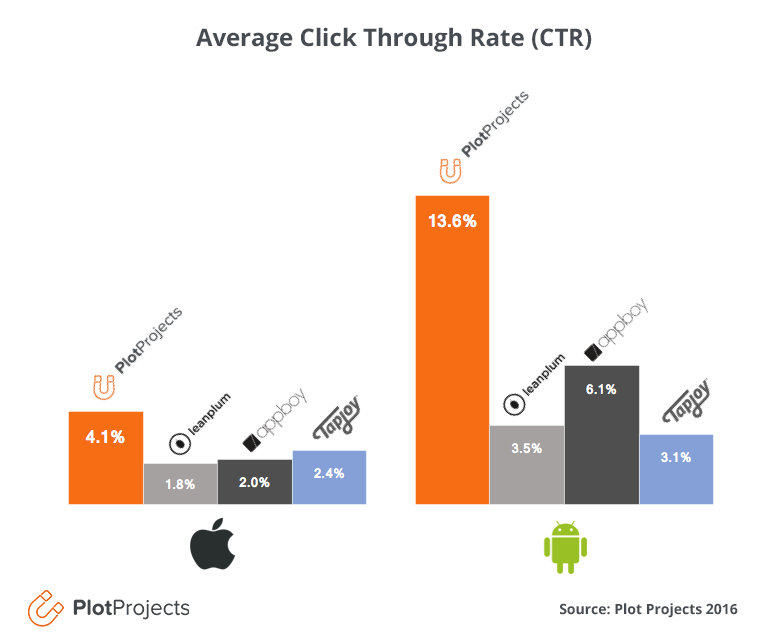
The graph above shows average reported open rate for notifications (users actively clicking on the notification). App opens that were not the result of a notification click are not taken into account here.
Leanplum, appboy and Tapjoy have a reputation for excelling in segmenting an app’s user base and sending relevant notifications to the right users. Generic push services that bulk send to all will have a lower CTR.
The old days of spray-and-pray marketing are well and truly over. Spammy apps that send generic messages get deleted. Engaging with your customers using relevant and interesting notifications is key. Some may even say it’s all about location, location, location!
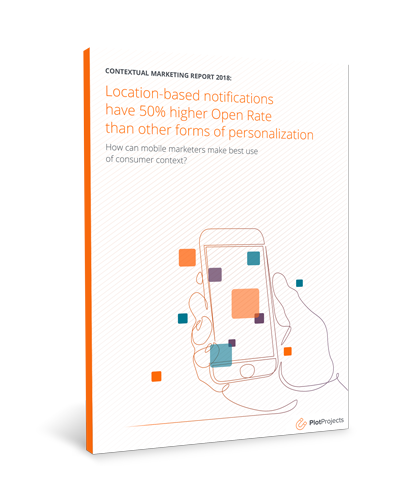 |
*NEW* research:Location-based notifications have a 50% higher Open Rate than personalized notifications.How can you use your user’s location, the missing puzzle piece in your personalization efforts, to double your engagement and take your mobile marketing strategy to the next level? Find out in our study!
|

